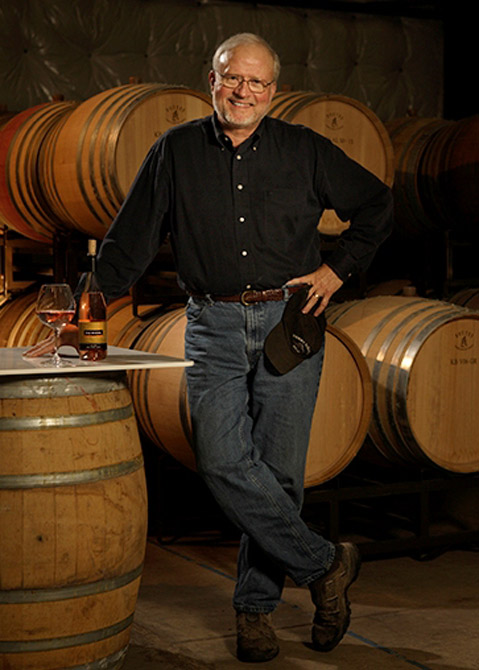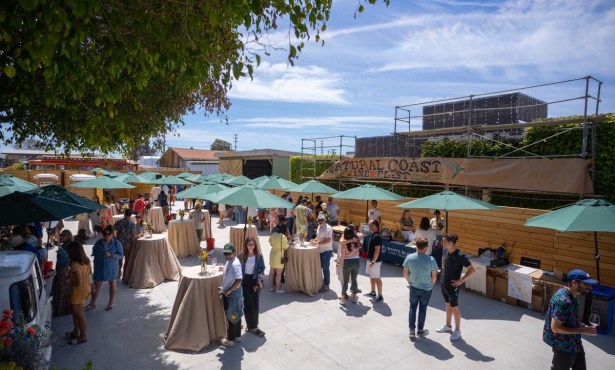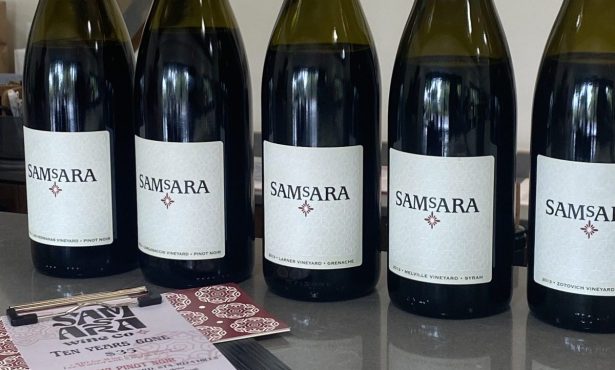You’re the Man, Ken Brown
Tracking the Career of a Santa Barbara County Winemaking Pioneer
If you’ve ever enjoyed a Santa Barbara County syrah, you should know Ken Brown’s name. As the first to introduce the varietal to the region, he is one of the Santa Barbara wine industry’s founding fathers. But Brown isn’t one to gloat. In fact, he discusses his pioneering endeavors with the kind of nonchalance that makes you wonder if you’d heard him correctly. As for being the father of Santa Barbara syrah, he laughs, “I don’t put that on my business card.”

In the late 1960s, Brown—a recent college graduate working for IBM and his real estate developer father—became entranced by wine while visiting a friend’s Napa winery. He fell so quickly and deeply into the barrel, he began doing things that raised eyebrows. “I never found anything I was so captivated by as winemaking,” he admitted. “I said to myself, ‘I don’t care what I’m giving up.’” First, Brown headed right back to school—new mortgage and all—puzzling friends and leaving a lucrative career in his wake. He studied both viticulture and oenology at Fresno State in the ’70s, when participating in both programs was almost taboo. “I felt like I had to sneak from one building to the other,” he joked.
In 1977, when Santa Barbara could count the number of its wineries on one hand and Brown was still in school, Marshall Ream of Zaca Mesa hired him to design, equip, and staff the new winery. In this way, Brown mentored dozens of winemakers who are now considered pioneers in their own right, like Jim Clendenen of Au Bon Climat and Qupé’s Bob Lindquist, who started out as Zaca Mesa’s tour guide. Coincidence or not, Brown’s wine career and the Santa Barbara wine industry flourished together as Zaca Mesa’s excellent reviews brought praise to the region.
After a few years, feeling uneasy about Zaca Mesa’s immoderately fast expansion, Brown moved on to build his own Byron winery (his full name is Byron Kent Brown) while still making wine for Zaca Mesa. In 1990, with Byron as successful as he could ever hope, Brown sold the winery to the Mondavi family, who kept him in charge and went public. “It was really amazing for six or seven years,” he said. “We were spending money like there was no tomorrow.”
However, when the dot-com recession of the late 1990s set in, Brown soon watched the Mondavis experience what had happened at Zaca Mesa—pushed beyond the limits of its growth, the winery began to crumble from within. So, without abandoning Byron, Brown started a new winery with his wife, Deborah, under his own name.
“I just decided I was too passionate about the winemaking process to get caught up in this corporate thing,” he explained. “Corporations have a different mentality than individual entrepreneurs do. For us, a big part of the return is the lifestyle.”
The Browns keep Ken Brown’s production at 2,500 cases, and easily resist any temptation to grow, especially keeping in mind that scarcity breeds value. After sharing a winery with Ampelos for a few years, Brown now excitedly makes wines at the new cutting-edge Terravant Wine Center in Buellton. He enthuses about how the large, glossy vintners’ co-op allows small winemakers like him to use superior facilities without having to make hefty capital investments. At Terravant, “small wineries can come in and use the best equipment without having to buy their own,” he explained. “It’s so cool to be able to know what the case costs are before making the wine.”
As crucial as having state-of-the-art equipment is to Brown, he spends an extraordinary amount of time in the vineyards. He only buys fruit via acreage contracts in lieu of tonnage ones. Doing so puts his name on specific rows of vines that he can be meticulous about. He delights in working with the vineyard crew, who he jokes know him for being nitpicky.
Indeed, Brown is even thorough while pouring his wines, referencing topographical maps to elucidate each wine’s vineyard and terroir. He emblazons the maps on his walls like parents show off photos of their children, and knows every groove of the vineyards’ landscapes as a parent know the dimples on their infant’s cheeks.
This appreciation for the land is another reason Brown remains so modest. As much ingenuity and devotion as he has contributed to Santa Barbara wine, he believes the region has become world-class “because we really have wonderful grapes to work with.” But, he added, “It’s also because we know we have the ability to make really good wines that we put the extra effort into winemaking.”
4•1•1
For more information, see kenbrownwines.com.



